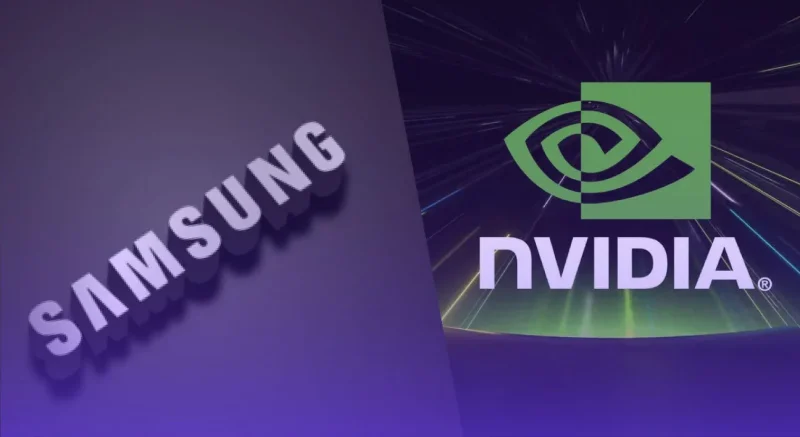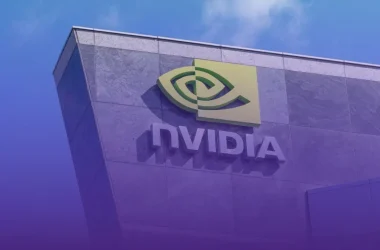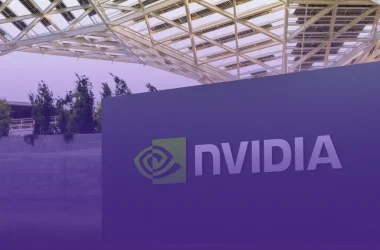Very recently, it was announced that Samsung (OTCMKTS: SSNLF) and Nvidia (NASDAQ: NVDA) are joining forces to push the boundaries of advanced semiconductor packaging technology. According to reports, Samsung has won a contract with Nvidia to provide the company with advanced chip packaging. NVDA stock is up more than 80% year-to-date.
This strategic partnership will see Samsung’s Advanced Package, or AVP, team providing an interposer and I-Cube, Samsung’s unique 2.5D package, to Nvidia, while other companies will produce the HBM and GPU wafers. Many analysts and investors think that Samsung lost its edge, and many are wondering why Nvidia is choosing to partner up with it. But, Nvidia might have more than one motive for pursuing this deal.
Samsung’s Comeback
In Samsung’s 2023 Q4 earnings, it reported a 34.57% drop in operating profit from the same period in the previous year, and its revenue for the quarter also fell 3.8% from a year ago. The company attributed this to weak global demand for its products. But now, it’s forecasting a whopping 931% jump in 2024’s Q1 profit, saying that this will be driven by a recovery in semiconductor prices and increased demand for artificial intelligence.
Samsung is the world’s largest memory chipmaker, and the global memory chip market is expected to reach $235.7 billion by 2027, so it’s no surprise that the company seeks to benefit from this growth, especially because the process of training AI and machine learning models requires feeding them extensive datasets, and memory chips come into play here by offering high-capacity data storage.
Why Nvidia Wants the Samsung Deal
After the Taiwan earthquake that forced semiconductor giant TSMC (NYSE: TSM) to evacuate its factories, NVDA stock dropped by 1% as TSMC is Nvidia’s main key contract manufacturer, as well as its main supplier for advanced packaging. Therefore, it’s no surprise that NVDA stock investors worried about how the earthquake would impact the company’s supply chain, but Nvidia put out a statement that said it didn’t expect supply chain disruptions from what happened, and TSMC itself shrugged off the earthquake and quickly went back to production after a one-day pause.
Back in June of last year, Nvidia CEO, Jensen Huang, said that he was confident in TSMC’s own geographical diversification because the company was constructing factories in Arizona and in Japan, but Nvidia definitely recognizes how dangerous it is to rely very heavily on a supplier based in an area that is prone to a lot of natural disasters, and maybe that’s why it’s turning to Samsung now for advanced chip packaging.
In fact, shares of Samsung were up 5.6% after reports saying that its high bandwidth memory chips could be used in Nvidia’s GPUs in the future came out following Nvidia’s GTC 2024 event. With the earthquake, as well as the risk of relations between the U.S. and China becoming even worse, in mind, it’s no surprise that Nvidia is moving towards diversifying its supply chain.
Strategic Moves Ahead of Blackwell Launch
There’s another reason why Nvidia could be doing business with Samsung, and it has to do with Nvidia’s upcoming Blackwell GPUs. Long-term NVDA stock investors would know that Nvidia has been trying to diversify its supply chain for a while now. For example, it was reported in late January that Nvidia decided to partner up with Intel Foundry Services (NASDAQ: INTC) for GPU packaging production, and this partnership will potentially start sometime in Q2.
This could be Nvidia trying to potentially lower its costs and diversify its supply chain, but when you consider the fact that TSMC said last year that demand for its chip-on-wafer-on-substrate has exceeded its production capacity, and vowed to double capacity by the end of 2024, then you’d realize that maybe Nvidia realized that it needs to rely on other suppliers in order to meet the insane demand for its products. This makes sense as the company prepares to release its next-gen Blackwell chips, which it says will deliver groundbreaking performance improvements that will allow companies to to build and run real-time generative AI on extremely large language models, while using 25x less costs and energy consumption than Nvidia’s older chips.
If Blackwell is truly the world’s most powerful chip for AI like Nvidia says it is, then demand for it to be much higher than anything Nvidia’s ever experienced before. In fact, the company said that big names in tech, like Amazon (NASDAQ: AMZN), Microsoft (NASDAQ: MSFT), Meta (NASDAQ: META), and many more, are expected to adopt the new Blackwell platform.
Jensen Huang told CNBC’s Jim Cramer that he expects the new Blackwell chips to cost between $30,000 and $40,000 per unit, so that’s a new and massive revenue stream for Nvidia, and the company will definitely do whatever it takes to ramp up the production of these chips, including finding new suppliers. This doesn’t mean that Nvidia will abandon TSMC completely, because Jensen recently said that TSMC is Nvidia’s closest partner, and in GTC 2024, he made it clear that Nvidia wants to become the TSMC of AI and dominate the sector, just like how TSMC owns 61% of the global semiconductor foundry market.
NVDA Stock Forecast
NVDA stock is up by more than 210% over this past year, thanks to the company’s revenue and earnings growth. But, this recent dip in its price has caused many to wonder if there’s even more room to grow. Wall Street analysts think that there certainly is. According to the estimates of 54 analysts covering NVDA stock in the last 90 days, the stock’s median one-year price target is $990, which is around a 15.15% increase from where it’s trading now.
According to a report by Wells Fargo (NYSE: WFC) analysts, Nvidia controls a whopping 98% of the data center GPU market, and it might seem impossible, but this share could increase even more after the company puts out its Blackwell chips. What’s even better is that the Blackwell chips won’t be a lot pricier than Nvidia’s current offerings, but thirty times better. This shows that the company is focused on maintaining its share of this $250 billion market with competitive pricing. This explains why Wall Street firms have been raising their price targets for NVDA stock. Goldman Sachs (NYSE: GS) has raised its Nvidia price target to $1,000 from $875, and Bernstein’s is similar. Wells Fargo now has a $970 price target on Nvidia, up from $840 previously. But the good news doesn’t stop here for Nvidia, as it was recently announced that its longtime partner, TSMC, will get up to $11.6 billion in U.S. grants and loans to boost local chip manufacturing in the U.S..
We all know that TSMC is building a factory in Arizona, and the company said that this factory would be able to produce new, improved generations of chips. This factory is expected to start production in the first half of next year, and if Nvidia manages to get its chips in the U.S. from TSMC, it’ll avoid all the troubles of worrying about a problem in Taiwan, or problems with U.S.-China relations. Certainly, Nvidia and NVDA stock still have a lot of room to grow, with all of this in mind.
Disclaimer
Please visit and read our disclaimer here.









